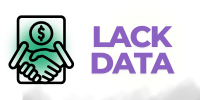You can’t think of many assets more valuable to companies than the data they store about their consumers.
With varied information about the behavior, preferences, and other characteristics of the public, it is possible to set up increasingly personalized actions to attract and convert the buyer persona.
However, the collection of first-party data honduras phone number data is a task that requires a strategic approach to convince the user that sharing their data is a safe and positive choice.
In this process, there is nothing more powerful than the proper use of interactive content.
The reason is clear in a study conducte by Unisys, which states that people are more likely to share their personal data if they are gaining something valuable in return. A simple example is the use of landing pages to exchange rich materials for contact information.
To understand how interactive marketing can be used to generate first-party data, we created this post. In it, we will explain:
- What is the difference between first, second, and third-party data?
- How can I collect first-party data with interactive content?
What is the difference between first, second, and third-party data?
We opened this text by talking about the importance of data for the commercial success of any company.
However, it is important to note that there are 4 benefits of an integrated solution different ways to collect such information, which directly affects the effectiveness and cost-benefit of a data-driven strategy.
For example, think of the various portals specialized frist database in collecting data and distributing it to interested companies. This is what we call third-party data.
At first thought, it seems like a very interesting idea since it enables a large volume of data on the most varied subjects.
However, we know that digital strategies need to be more personalized if they want to meet the 4.0 consumer demands. That’s the problem with third-party data.
Because it deals with such a wide to Collect environment, it is difficult to extract specific information for your business’s reality, which may limit your possibilities.
Moreover, as it is a public source of data, the chance that you end up sharing the same information with your competitors is great. That way, the level of competition would become even higher.
Besides competing, companies can also cooperate with each other. This is the biggest idea behind the concept of second-party data. This often occurs between corporations that focus on different niches and, therefore, share data with each other without worrying about losing competitive advantage.
A travel agency, for example, could exchange information with a company responsible for providing transportation for tourists in the city. It is a win-win situation.
Second-party data is also very common in companies that cannot develop their own data collection channels or simply want to extend their database with more information.
Although it is a creative and, to some extent, effective alternative, second-party is not as valuable as first-party data.
First-party data
Put simply, first-party data refers to the consumer information you have collected from your own acquisition channels.
This data is under your responsibility, and you must manage it in a way that benefits your company without disrespecting the regulations to Collect regarding this type of activity.
The great advantage of first-party data is that it is produced from your potential consumer’s direct consent.
In other words, the person has already demonstrated confidence in your business, which means that your branding and authority-building strategies are on the right path.
When they make their own data available, consumers also indicate that, in some way, they are interested in the material you are offering. From there, the path towards the conversion phase of the funnel becomes much faster and easier.
Moreover, owning first-party data gives your strategic department much more freedom to create customized approaches.
With the ability to manage your own database, you can work on detailed segmentation to improve the way you develop and execute your marketing and sales strategies.
The main limitation here is reach. Because it does not deal with secondary sources, first-party data acquisition may find it difficult to involve to Collect a significant amount of information.
Therefore, it is essential to invest in strengthening these channels, which can be jointly employed.
Here, we need to emphasize the importance of conducting this entire process according to both ethical principles and your region’s regulations.
Therefore, before turning our attention to the use of interactive content in first-party data collection, we will highlight some points of GDPR and other important legislation.
